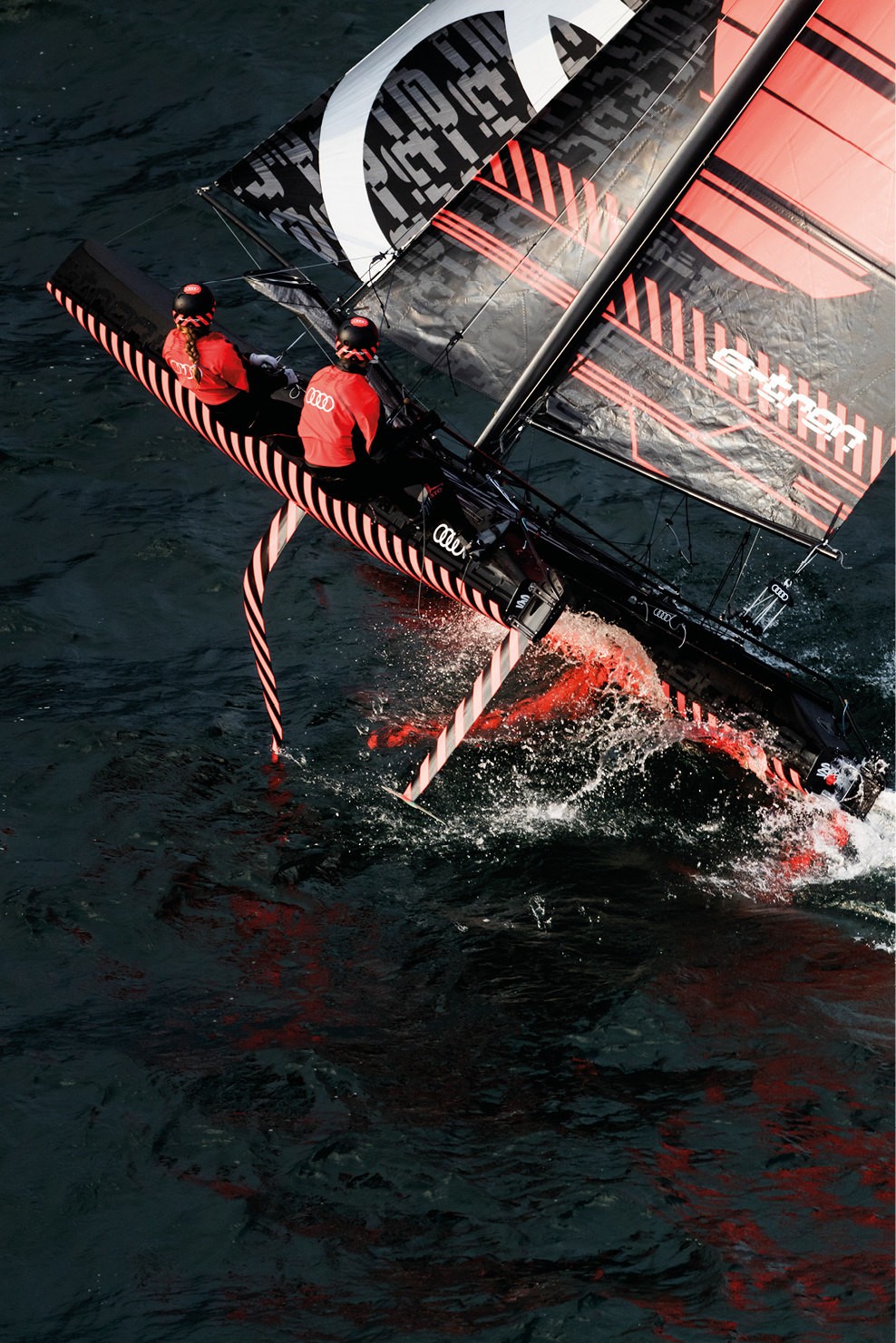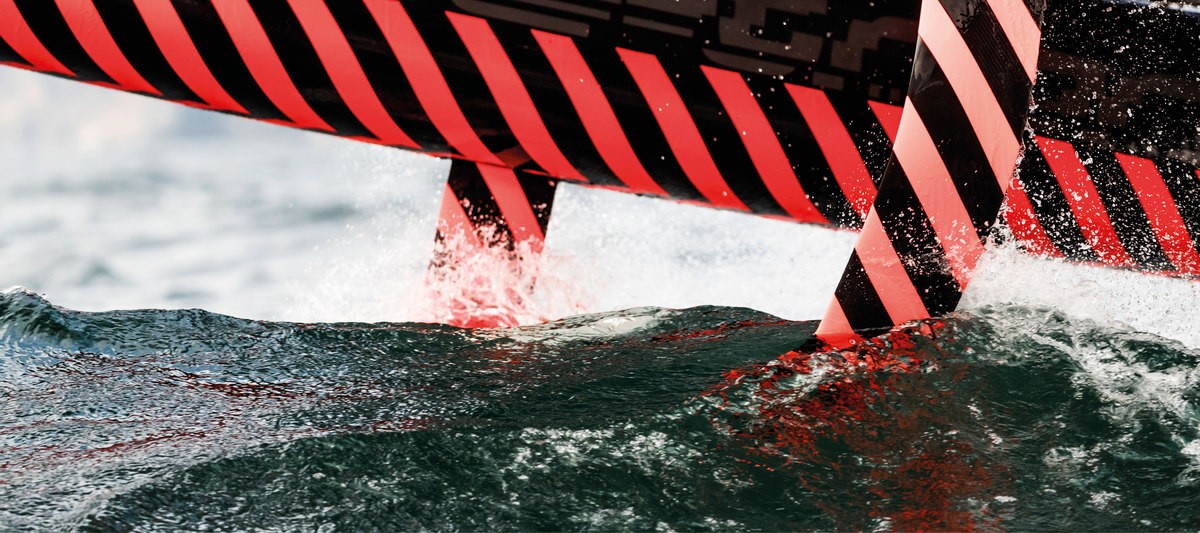
The boat is a beast
Johannes Polgar and Carolina Werner, two of Germany’s finest sailors, are competing in the new Nacra 17 mixed one-design class. Representing the next evolutionary stage in sailing, this multihull boat glides over the water on innovative foils. The Polgar/Werner duo’s goal is to qualify for the 2020 Tokyo Olympics. In mid-May, we caught up with the pair at their training camp at Lake Garda, Italy, where the Audi e-tron Nacra 17 boat took to the water for the first time.
Bernd Zerelles (copy) & Richard Walch (photo)The Audi Magazine: Johannes, you “retired” from active regatta sailing in 2012. How did you end up pairing with Carolina to mount yet another Olympic bid?
Johannes: I attended the 2016 Olympics in Rio de Janeiro in a work capacity. At the German House, I ran into Caro, whom I had not known personally until then. Caro sailed in the multihull class in Rio—the same class in which I competed during my last Olympic Games in Beijing in 2008. The Argentinian sailor Santiago Lange, who was one of my training buddies and best friends during my competitive career, won the gold medal in Rio at the age of 54. His was such an emotional victory that I was completely captivated by the Olympic spirit again in Rio. I said jokingly to Caro that I hadn’t sailed a catamaran since the final race in Beijing, and that she should take me out sometime in this new Nacra boat. At some point, Caro actually called me and asked: “So what’s the deal? Did you really want to go sailing with me?”
So, it was you, Carolina, who seized the initiative and brought the two of you together as a team?
Carolina: I had parted ways with my old sailing partner but wanted to embark on a new campaign. I started to think about who I could do that with. On paper, Johannes Polgar was just a very good sailor. Experience is extremely important in sailing, and Johannes has plenty of it. I also did trials with other crews, but he and I get along very well on a personal level. That’s why Johannes is the best choice.
Johannes: Caro checked the transfer market and, for whatever reason, opted for me.
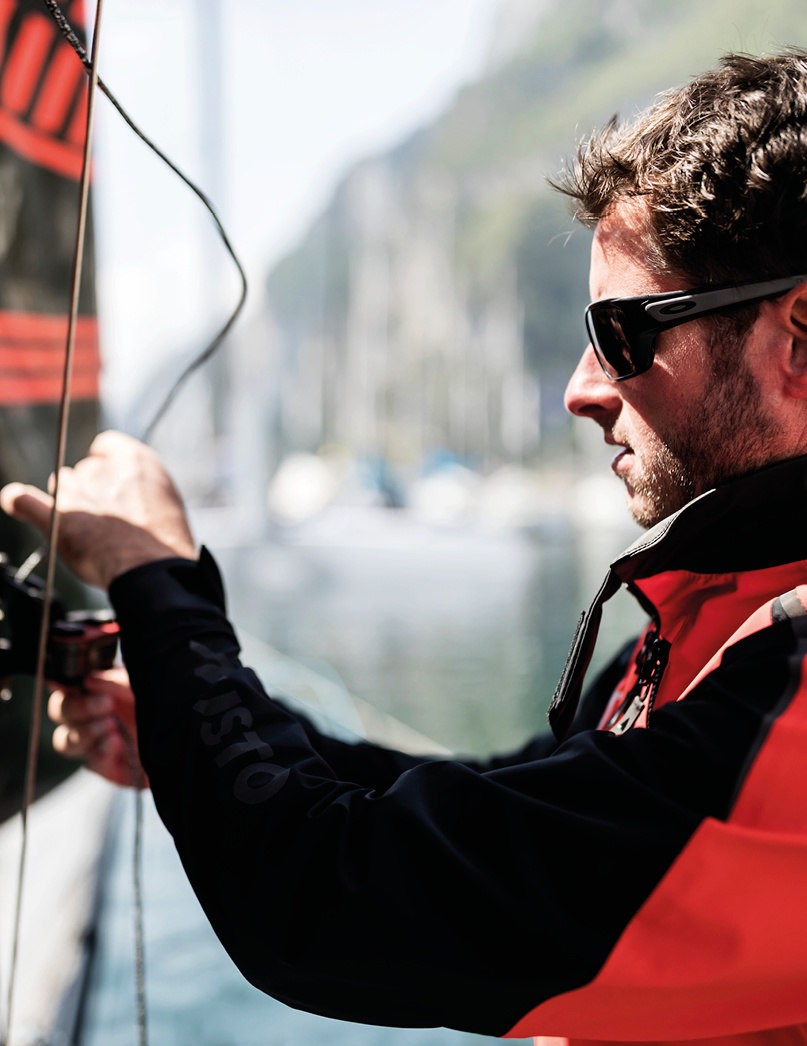
The native of the Sauerland region is one of Germany’s top sailors. On course for a medal at the 2008 Olympics in Beijing in the Tornado, he struck a piece of driftwood and capsized with a broken lee helm. In 2010, he was crowned European champion in the Star class. Polgar ended his Olympic career in 2012 to focus on meeting the professional challenges of event and sport marketing with car manufacturer Audi in Germany.
Johannes Polgar and Carolina Werner prepare for the upcoming regatta season in the Nacra 17 on Lake Garda. Designed by Marc Lichte, head of Audi design, and Marco dos Santos, Audi design, the head-turning training boat featuring the bold Audi e-tron look is used for special occasions.
Johannes Polgar
“The vantage point for us sailors is spectacular. The entire boat hovers above the water, supported only by these four blades.”
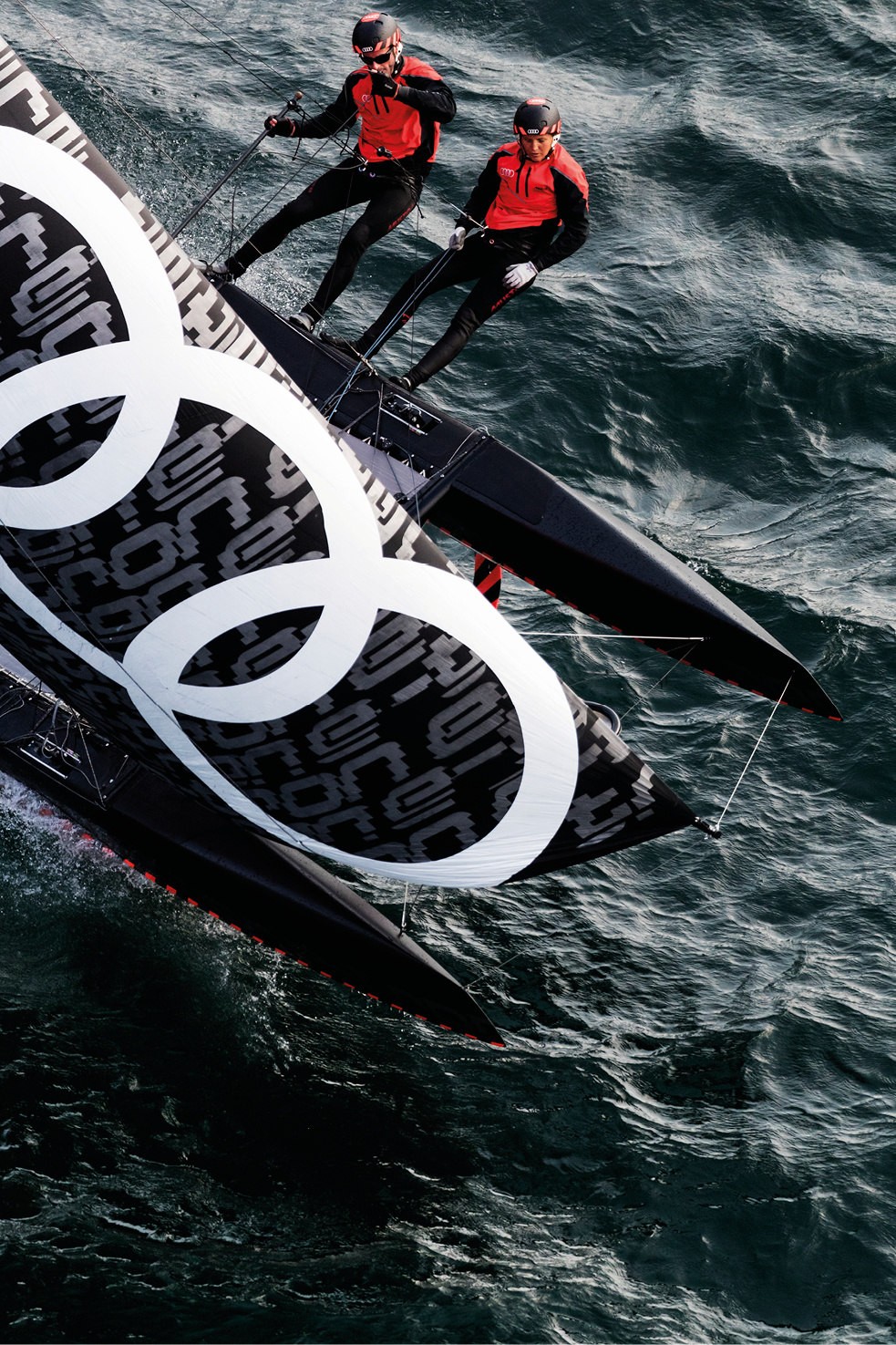
In Rio, the Nacra multihulls were still sailing without foils. This development only came about after the Olympics. Did the issue of foils play a part in your decision to compete again?
Johannes: First and foremost, the Olympic Games are what really appeal to me yet again. From November 2016, it was clear that the new mixed class would be sailing on foils. That came as a complete surprise to me. But it’s also an absolute blast. I’m now getting to know a spectacular and innovative type of sailing that lets me further hone my skills. All teams are starting from the same level when it comes to foils, so it’s a completely new way of sailing for everyone. That is a unique opportunity. And I’m absolutely thrilled to be involved.
How is foiling different? What sets it apart?
Johannes: The vantage point for us sailors is spectacular. The entire boat hovers above the water, supported only by these four blades. As soon as the boat starts to foil, everything becomes amazingly quiet. You no longer hear the slapping of the water, just the whistle of the foils. It makes you feel unstoppable. With only a small part of each foil remaining in the water, the boat simply takes off; the catamaran now has free rein and is so much more efficient. The extreme speeds add an extra kick.
Is sailing with foils a more athletic, more challenging sport?
Carolina: On choppy waters, yes. As the crew, I have to constantly move up and down the entire length of the boat to balance it. But above all, there’s that completely new factor of Johannes and I having to control not only the sails but also the foils. While one of us adjusts the foils on the lee side, the other does so on the windward side. The coordination between us has become extremely important because we have to trim not only the mainsail together, but also the behavior of the foils. Sailing in this way has become much more challenging, not just in terms of the overall operation of the boat, but also in relation to the boat’s hydrodynamic characteristics.
Johannes: Having a shared feel for which mode we want to sail the boat in is very important. If one of us were to adjust a foil in the wrong direction, the consequences would be disastrous. This ability to act in concert and to balance the boat is the major new technical task that we must perform as a team—in addition to the tactics used on the regatta course.

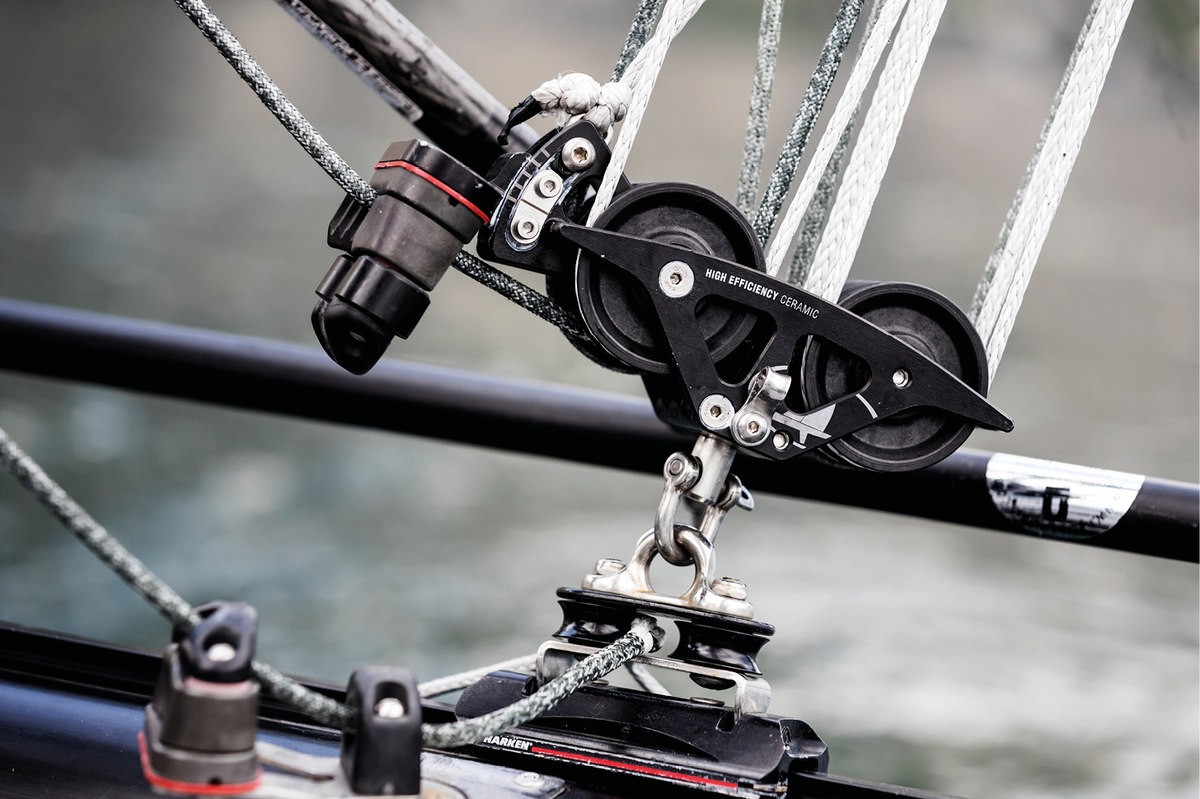
Which is the greater challenge? Getting to grips with the new foiling technology or building coordination between yourselves?
Carolina: To begin with, I had to learn how the boat will respond if I turn the foil in one direction or another. How does the main foil interact with the rudder? How do you trim the sails to suit the foil? We have finally got that under control. Now we must synchronize to become one with the boat.
Johannes: The challenge is to gain complete control over the platform and sails so that we can take our eyes off the boat and focus on wind conditions, other competitors and the regatta course.
The Nacra 17 boats are a one-design class, which means that all teams sail identical yachts. Is there any scope at all to gain a technological edge?
Johannes: There are defined measurement limits within which we have to pinpoint what can be optimized. While constructing completely new foils that incorporate technical innovations is not permitted, we can optimize the existing foils to the nth degree. With the help of the Audi design department, for instance, we analyze the different foil sets using 3D scanning technology—because there are, of course, manufacturing tolerances.
Carolina: But ultimately, we must then compare the different foils in action on the water because the crucial question is: which fits best with our sailing style?
How would you describe your style of sailing?
Carolina: We were a little hesitant in the beginning. But now we’ve released the handbrake; we’re endeavoring to reach the limit and want to coax the last drop of speed from the boat.
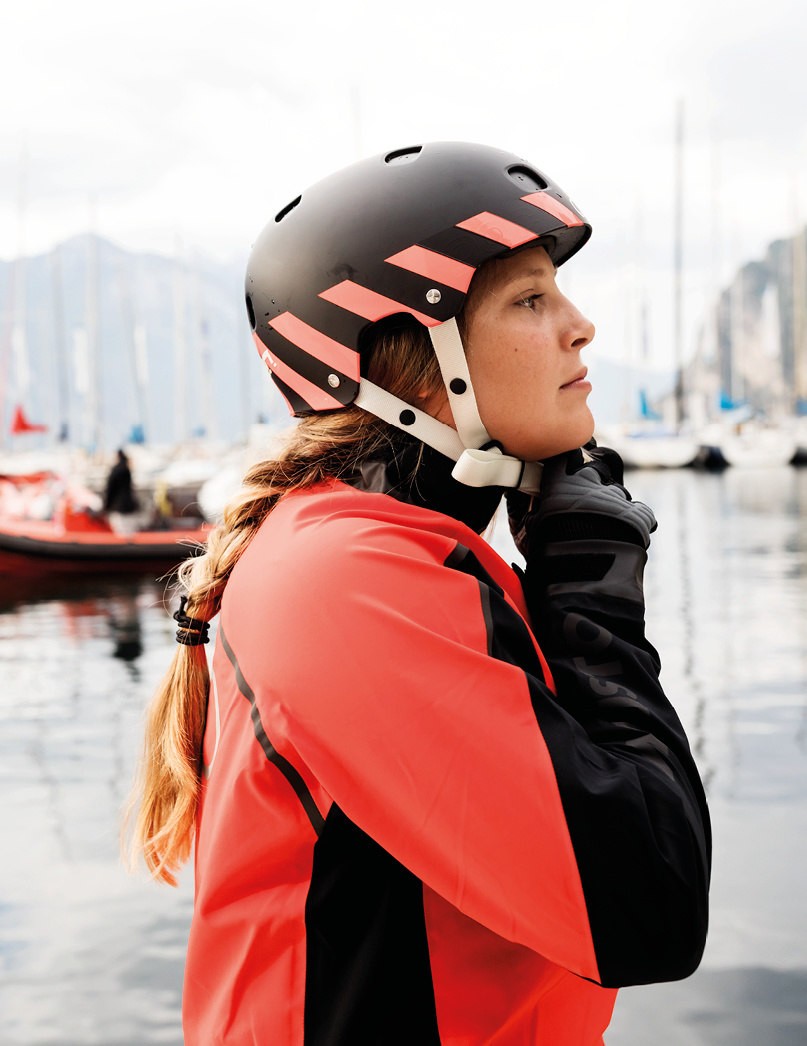
The part-time student of agricultural science from Kiel has made a name for herself in sailing circles as the “German wonder kid”. Along with her former helmsman Paul Kohlhoff, she became European junior champion in 2014. Werner also claimed fifth place at the World Championships in 2015 and came 13th overall at the 2016 Summer Olympics in Rio de Janeiro—all on boats in the Nacra 17 class, but without foils.
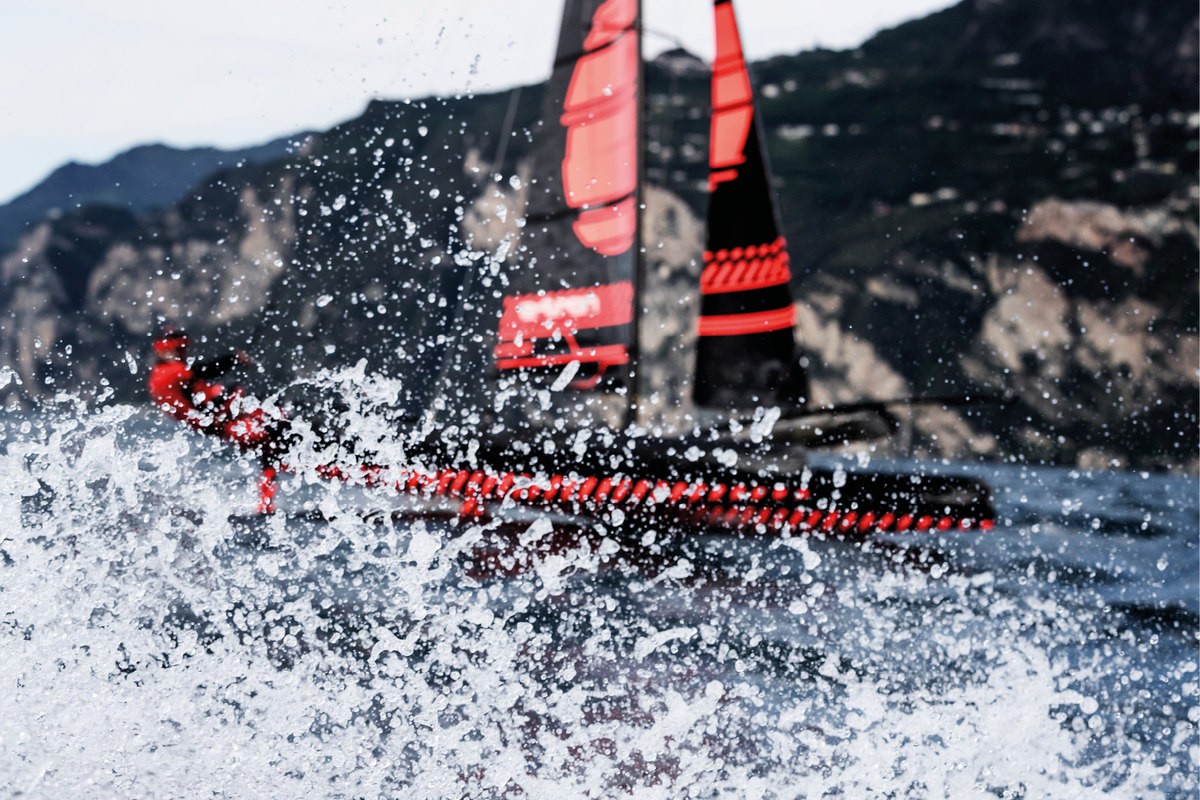
Carolina Werner
“We’ve released the handbrake; we’re endeavoring to reach the limit and want to coax the last drop of speed out of the boat.”

Your social media channels have documented more than a few crashes. Are they part and parcel of foil sailing?
Johannes: I remember one day during one of our first training sessions in Kiel when we capsized seven times. During this training camp on Lake Garda, we haven’t crashed once. We’re currently working through a steep learning curve.
Carolina: The first weeks were tough. Simply put, sailing this boat is a highly complex affair. At a wind speed of seven knots, the boat is traveling at 15 knots on foils. Once the boat rises from the hulls up onto the foils, there is very little room for error.
Johannes: Caro is the daring one, the aggressive one who always pushes—constantly focused on taking the boat to its limits. I’ve become more cautious and prudent with age and prefer to take a calculated risk.
Carolina, it almost sounds as if Johannes has been the limiting factor so far.
Johannes: In all honesty, I have to agree. The first few times we sailed the boat, I experienced genuine fear. At a boat speed of 23 knots in foil mode, everything vibrates and you sense that you’re getting close to the limit. Even the tiniest of errors is catastrophic. It felt like getting into a car, driving flat out and, at some point, driving straight toward a wall. I had to work hard to overcome that sensation—and I sought help from Audi racing driver Tom Kristensen, who was very supportive to me as a mental coach. Tom is an extreme performer, but with a calculated level of risk. He sets out to win every time, no holds barred. He showed me how he made his way back to the cockpit even after serious accidents. I found that enormously helpful in overcoming my mental block and trusting that I would also improve my foiling skills.
Carolina: Starting out, we were wise to be careful because a lot of sailors had already injured themselves on these boats. Over the past two to three months, we’ve made extreme progress, becoming a lot faster and more confident on the boat. As soon as you notice that things are coming together, the pace picks up even further.
Johannes: My experience has taught me to be patient, to keep the big picture in mind and to know, based on realistic assessments, precisely when and how we need to reach each step. Caro is a bundle of energy—just like our boat. She wants to take it to the max on every single course—and really loses her cool at times if something doesn’t click as fast as she would like it to. I sometimes feel like she wants to actually crash through that wall. It’s great to have someone who pushes so relentlessly. On the other hand, I’ve realized that my cool head and “even keel” make sure things don’t get too risky. It’s a thrilling mix—and a challenge.
